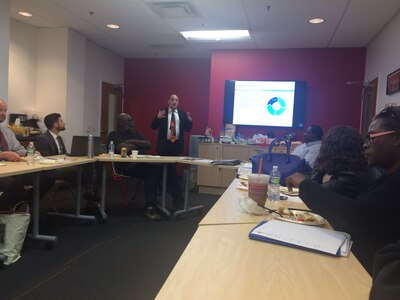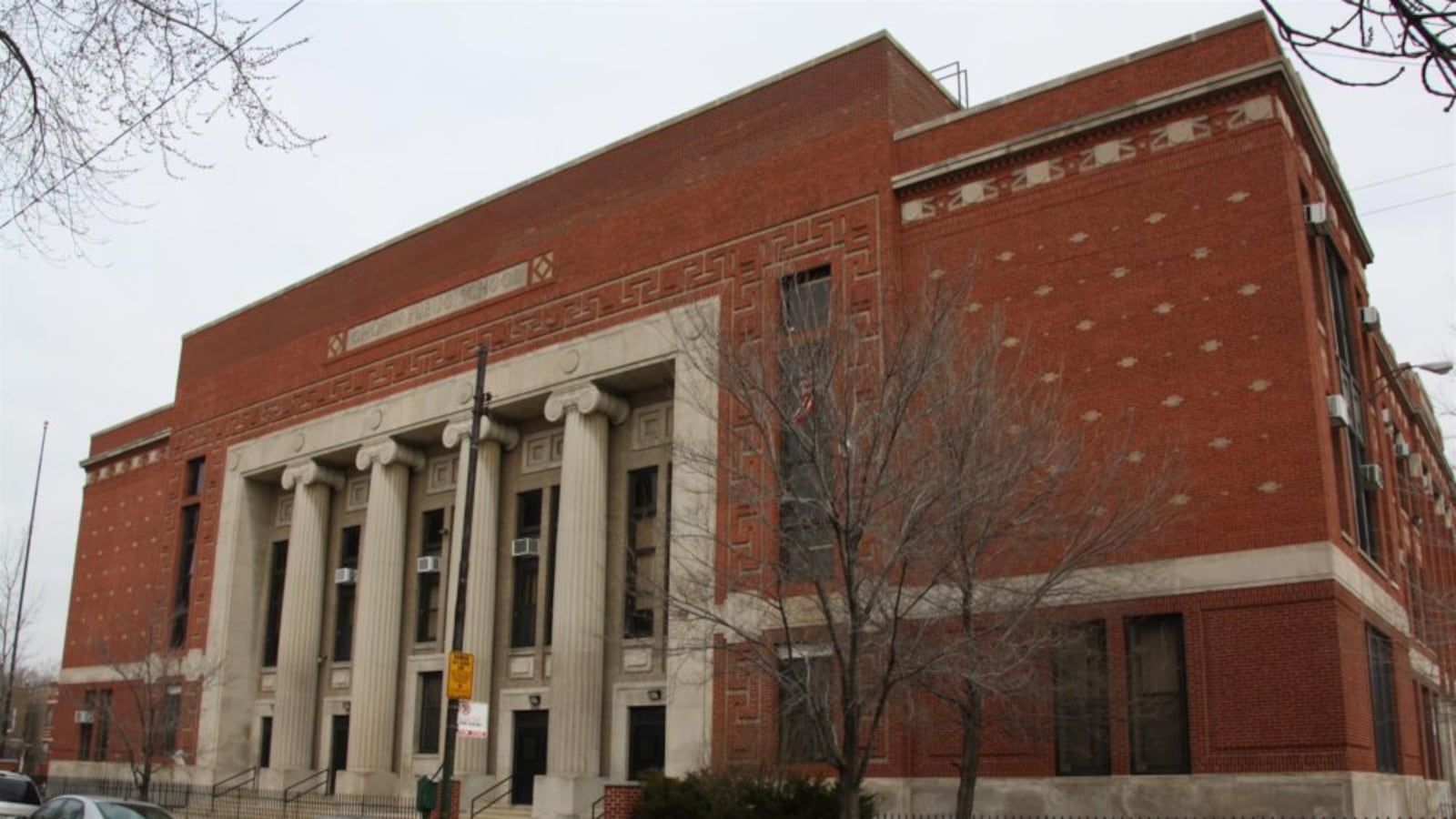Carolina Gaete had a question. The North Lawndale resident wanted to know how Chicago Public Schools decides which improvements to fund at the hundreds of district campuses across the city. “How is it determined which schools are prioritized?” asked Gaete, co-director of community group Blocks Together and the mother of a CPS graduate. “Do you have a system—and what’s the process?”
Gaete’s question to the district—more on the answer later—was posed Monday during a community meeting in West Humboldt Park with CPS officials. Chicago schools that suffer from faulty boilers, leaky roofs, and crumbling masonry have little recourse given that CPS’ $189 million capital budget for the fiscal year that begins July 1 only addresses 6 percent of the estimated $3.4 billion need.

Between now and June 28, CPS is sending staff to community meetings to gather feedback for the latest draft of its Educational Facilities Master Plan. The 10-year plan, born out of a 2011 state law aimed at increasing transparency around the district’s investments in school buildings, is updated periodically. The law requires community input.
All of the meetings are open to the public. Most are hosted by parent advisory councils and community action councils. Here’s the list of meetings.
At the West Humboldt Park event, a handful of public school officials filed into the Nia Family Center and settled along the back wall of a conference room. Gaete and other members of the West Humboldt Community Action Council listened as Dispensa covered some basics: how the city prioritizes building investments across 16 planning zones, factoring for facility deficiencies as well as population and enrollment trends, and how the district calculates building utilization rates, which have been used to justify school closings.
Gaete, like several councilmembers, is part of Blocks Together, a community group that helped craft the 2011 state law that sought to reform the facility planning process at CPS. Unsurprisingly, they were among the most vocal when Dispensa concluded his presentation and opened the floor to questions and comments. Gaete was ready: “How is it determined which schools are prioritized—what’s the process?”
In response, Dispensa explained that CPS prioritizes individual building needs starting with roofs and masonry, then it ranks next all needs related to mechanical, electrical, and plumbing, and interior finishes and program spaces. Areas outside schools such as playgrounds and parking lots rank last.
“There is a process,” Dispensa continued. “It begins with having proper facility assessments from expert architects who go and visit every school and tell them what the priorities are.”
Gaete followed up: “How often are those assessments done?”
One of the district planners seated behind Gaete said every two years—but that the assessments had been suspended since 2015 due to budget constraints. Most of the building condition information in the draft facilities plan is outdated.
The district’s capital budget for the upcoming fiscal year identifies improvements for only 23 of CPS’ 526 campuses across the city. About 80 percent of the budget is earmarked for the first priority tier: exterior renovations to roofs, windows and masonry. Dispensa said the district could use more state funding to better address its capital needs.
But the meeting on Monday was about more than money and building assessments:
- West Humboldt Community Action Council member and CPS parent Cecile Carroll, 34, said during the meeting that the plan doesn’t articulate where the district is going to place charter schools or how much money it spends on charter facilities. “We can’t do our job and plan better for our schools when we have a whole other piece to the puzzle we’re not able to see,” said Carroll, Gaete’s co-director at Blocks Together and a member of the Chicago Educational Facilities Task Force, which the Illinois General Assembly established in 2009 to examine decisions made by CPS.
- Council members also questioned Dispensa about the district’s utilization formula—that is, the equation the district uses to determine whether a school is “underutilized,” “efficient,” or “overcrowded.” They suggested that CPS strongly consider alternatives to closing schools where the population of students has dwindled. They gave such ideas as sharing extra space with community based social service agencies, adjusting attendance boundaries, or investing in school improvements to boost academic achievement.
- Several people asked the district to bolster its outreach efforts around the facilities plan, contending that not every community is represented by the groups on the current tour. They complained that the slate of June facility meetings only includes one with a Local School Council.
While Dispensa said CPS aims to work with certain groups, he pointed out these are open meetings. “I think that we can all agree the district hasn’t done as great a job with [community feedback] as we know we can,” he said. “And so we’re taking this opportunity to work with (community groups) to get a better sense of what that engagement looks like.”

